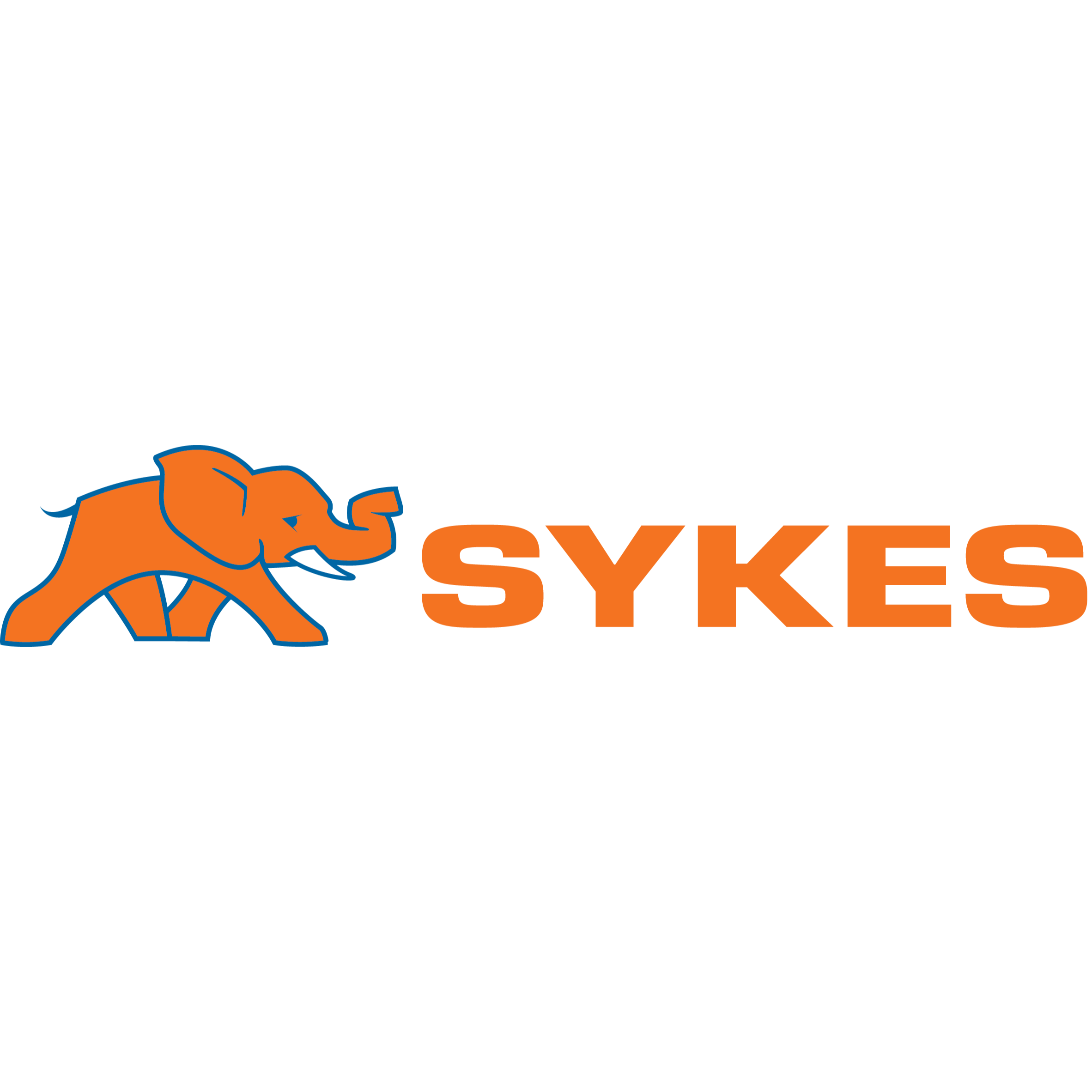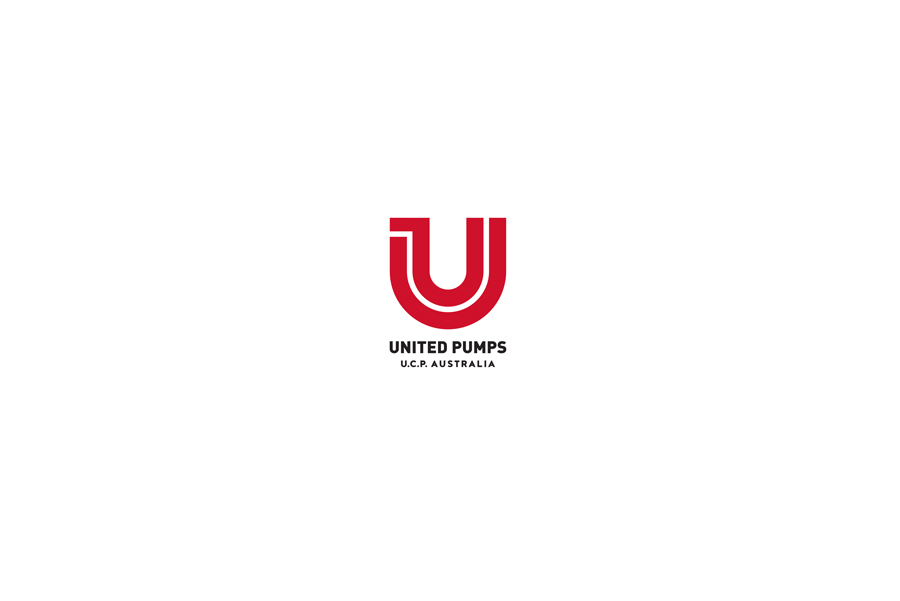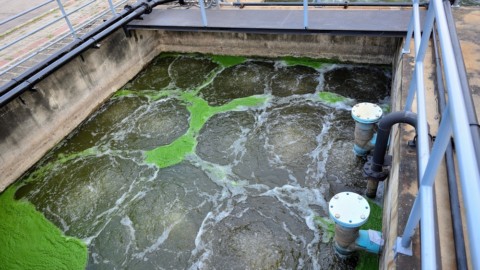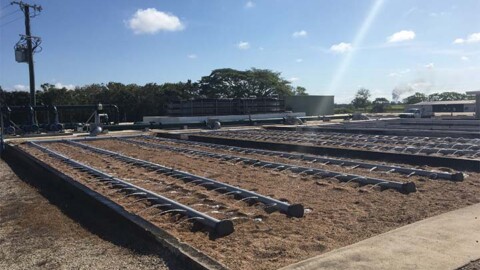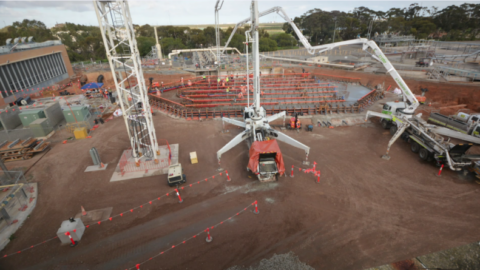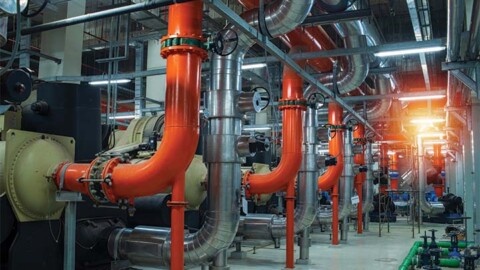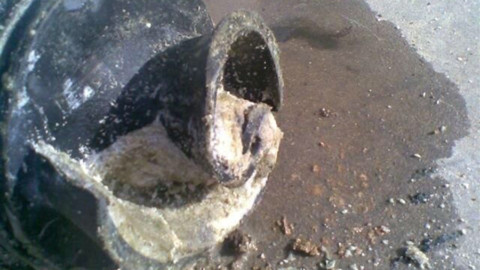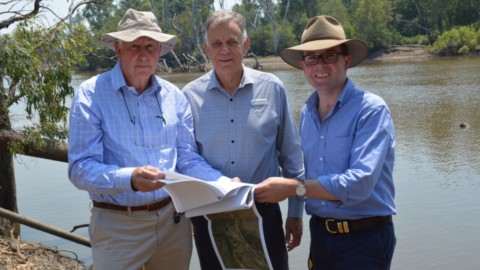As the saying goes, hindsight is 2020; but no one could have foreseen the wide scale effects COVID-19 and a devastating fire season on us last year. Now in its eighth year, Pump Industry’s State of the Industry explores how the events of 2020 impacted the industry compared to pre-COVID expectations, how respondents expect the industry to perform in the coming 12 months, and what opportunities companies can take hold of.
The industry experienced a lot of ups and downs in 2020, with most sectors not performing as well as expected due to the unexpected local and global effects of the COVID-19 pandemic.
However, it was not all negative, and while some companies felt the bite more, drought-breaking rainfall, the need for essential services to continue operating and minimal restrictions in some states and territories saw many companies still have a successful year.
The Pump Industry survey this year provided insights into how big of an effect COVID-19 and other disasters had on the industry in 2020, what affects the virus is expected to continue to have in 2021, and what other challenges and opportunities lie ahead.
A year of disasters: an essential industry adapting to uncertainty 2020 was turbulent for Australians, with a number of disasters hitting one after the other, affecting the pump industry in various ways.
Like most industries, pumps were not immune to the impacts of these events and they had a major effect on the performance of the industry and the sectors it services.
2019/20 bushfires
The 2019/20 bushfire season was the first disaster to hit the country as it brought on the worst bushfire crisis the country has ever seen.
During this time, not only was a lot of pumping infrastructure destroyed, but pumps also played an important role in assisting firefighters in their efforts to battle the blazes.
Pump suppliers and manufacturers stepped-up and supported firefighting efforts with supplies, donations and technical expertise. With damage to a lot of pumps and associated infrastructure, there was an increase in demand for replacement equipment.
This led to many pump suppliers running out of stock as demand sky-rocketed. Many companies also donated replacement pumps, tanks and other equipment to farmers and others who had lost everything to the blazes.
As the fires were being brought under control, the Federal Government announced a $100 million bushfire support package for primary producers. This package was aimed at helping producers purchase or hire immediate essentials like fodder, water, pumps, irrigation systems, generators and much more.
While bushfire plans and preparation are a well-known part of rural life, and equipment is in place in case it is required, one pump supplier told Pump Industry that a lack of education around preparing for bushfires was a primary issue with customers and volunteers.
The supplier said that education on which pump is right for the customers needs and limitations was vital to ensuring the correct equipment is supplied so end users aren’t left vulnerable in the future.
Floods
Following the bushfires, the country was lashed by devastating rainfall and hail at the beginning of February. While it brought much needed relief to fire-affected areas, it also caused wide-spread flooding and damage to parts of New South Wales, Queensland and the ACT.
Additional pumping equipment was required to help with the flooding in some areas. One example was the deployment of additional pumps to help clear water from the decade-old Sydney Metro tunnel between North Ryde and Chatswood as the existing infrastructure was unable to deal with the amount of water that had fallen over the city.
On one day alone, more than a million litres of water was pumped out. In regional areas, pumps were brought in and working overtime to pump water into private dams and reservoirs to be used for irrigating farmland.
However from this event, councils and companies across Australia looked to flood mitigation measures to help increase their resilience for future flood disasters, including funding for upgrades to water infrastructure.
The floods also brought drought-breaking rainfall which continued after the flooding finished, bringing confidence to farmers for a good crop season and the financial security to invest in new equipment.
COVID-19
The rapid global spread of COVID-19 early in the year has had the biggest impact on the industry and saw a lot of changes for companies, with sudden developments and changing restrictions based on official advice, such as restrictions on travel, international and state border closures, and lockdowns having a knock-on effect.
As pumps and associated equipment are crucial for the function of many of the sectors classed as essential by the government, the industry was able to keep operating through all lockdowns with changes in the workforce where necessary to meet restrictions, such as employees working from home where possible and added compliance in-house and out in the field.

Figure 1: Respondents reported varying levels of impact to company performance for 2020 from COVID-19.
The extent of the impact on company performance was dependent on where a company is based, which sectors it services and where it’s product is manufactured. As can be seen in Figure 1, a majority of respondents (31.76 percent) reported that COVID-19 only had a minor impact on the company’s performance, while 25.89 per cent said they had been significantly impacted, 36.47 per cent said it had a moderate impact, and 5.88 per cent said it had no impact.
For those that rely on imported products and components, the Australian industry saw a shortage of containers and vessel space early in the pandemic, and there was global supply chain disruption as factories in the US, Europe and Asia were forced to temporarily close down to help contain the spread of the virus, resulting in extended lead times for product and materials.
Company travel has also been impacted, with the national border closure making international travel impossible, and state border closures preventing or greatly limiting the ability to travel interstate at various times, restricting opportunities for in person meetings or site visits.
One respondent said “travel restrictions between states to our branches to allow specialised personnel to attend/complete projects” had impacted them; and others said it prevented them from meeting interstate clients and for undertaking marketing.
Those who rely on international travel further felt the effects, with one respondent noting “the COVID-19 interference allied with interstate and international travel restrictions ‘shackled’ the performance and expectation of our interstate and international business”.
Social distancing restrictions further reduced chances for companies to meet new and existing clients with events and conferences cancelled or postponed. Another impact of social distancing was indoor capacity caps, with one responder citing the restrictions on “the amount of people in the shop front” having a minor impact on company performance.
While the industry has been able to keep operating, respondents said the uncertainty of the situation has created a slow down in demand, citing a number of reasons including:
- Customers being cautious of “new investment due to it being harder to carry out projects”
- Low demand of products (gasoline, diesel)
- Minimal demand on new water supply projects or irrigation pumping systems
- Little new building during COVID-19
- Demand on new pump purchases well below expectation due to unfavourable economic conditions
- For some sectors, there were “no new jobs”
Another consequence of the pandemic as noted by a respondent was a “curbed enthusiasm for innovation”. For those not servicing the major essential industries, there was a slow down in work despite being able to continue operating. Respondents noted that projects were cancelled and postponed, contracts were delayed, and that “companies consolidated their operations to the point of being stagnant”.
Other respondents had a more positive take on the impact of COVID-19 on their business, with respondents noting that:
- Business flow remained stable throughout the downturn
- More work than expected during the pandemic
- Greater demand for pumps
- Clients buying stock items to prepare for COVID disruptions
Projects which were awarded continued - As a designated essential business we were able to assist more companies with a bigger variety of work
Those with a foot in rentals also did well, with one respondent noting that the “rental business grew on slowed industry CAPEX spend”.
With the COVID situation stabilising in Australia, there were very few restrictions on interstate travel by the end of 2020 and the increasing of capacity caps in states means events and conferences can start looking towards being able to possibly take place again in 2021. This is reflected by one respondent who noted that their “work level continued increasing toward the end of the year”.
International travel is still off the table until a vaccine is adopted globally, and it is still uncertain as to when it will be allowed and of any limitations. For now, while it appears a vaccine will soon be available, its rollout will take time and 2021 looks like it will still be under the cloud of the virus, with restrictions temporarily coming into place if more outbreaks occur.
Globally the situation is more unstable in most regions, but some manufacturers have been able to pivot and adapt, and help with the global virus response. Grundfos designed and produced face shields in order for the health and care sectors to protect employees and their patients.
These have been manufactured and rolled out in a number of countries. Eaton also produced face shields for roll out in the US. Apex Pumps manufactured and delivered a bespoke pump to a UK chemical company designed to aid the production of hand sanitiser.
These are only a few examples of the work that has been done in this space.
Expectations for 2020 and looking towards 2021
Even before the successive disasters that hit Australia, the industry was approaching 2020 with caution following the official end of the mining boom in 2018 and the sector’s slowdown, and the known (and unknown) effects of external factors such as online competition and the then ongoing US-China Trade War.

Figure 2: Despite the effects of COVID-19, respondent’s expectations for company performance in 2021 remains relatively stable from 2020 expectations.
Respondents are looking to 2021 with the same level of caution, with 20.29 per cent reporting a neutral outlook for their company for the year ahead, compared to 22.22 per cent in 2020. There was a slight increase in positive and negative outlooks for their company compared to the previous year –69.57 per cent have a positive outlook for 2021, up from 68.25 per cent in 2020, and 7.25 per cent have a negative outlook compared to 6.35 per cent in 2020.
Only 2.9 per cent reported they don’t know, down from 3.17 per cent last year. These results can be seen in Figure 2. Despite over 50 per cent of respondents reporting their company’s performance was moderately or significantly impacted by the COVID-19 pandemic, expectations for 2021 remain relatively stable.
This could be attributed to respondents already entering 2020 with caution after 2019 didn’t pan out as well as expected, as well as the stabilisation of the COVID-19 pandemic in Australia and a majority of borders opening to other states and territories, and the announcement of millions of dollars of federal and state funding for fast-tracked infrastructure projects.
While there was a slight increase of less than one per cent in the negative outlook for 2021 – the highest it’s been in the past four years – it is still well below the 2017 negative outlook which sat at 21.2 per cent.
Even though expectations for the year ahead remain stable, the COVID-19 pandemic did have a notable impact in 2020, with 42.75 per cent of respondents reporting company performance fell short of expectations – a significant increase from the 27 per cent reported in 2019 and the highest since 2017 when unstable commodity prices, a weak Australian dollar and a downturn in the mining industry were affecting the industry.
With this increase, there was also a decrease in reports that companies’ performance met or exceeded expectations for the year. As shown in Figure 3, 24.64 per cent felt their company’s performance exceeded expectations, down slightly from 25.4 percent last year, and 32.61 per cent felt it met expectations compared to 27.62 per cent in 2019.

Figure 3: There was a notable increase in companies reporting their performance in 2020 fell short of expectations, likely greatly influenced by the effects of COVID-19.
It is clear COVID-19 will remain a key challenge and top of mind for the industry in the year ahead, with the uncertainty about outbreaks, the ongoing effects from 2020 and the expectation that a return to normal in Australia could be as long as 12+ months away. Globally this could take even longer. There are other ongoing challenges the industry is dealing with, lending themselves to the increased negativity.
However, there are glimpses of hope and opportunities for companies to take a hold of, such as an influx of infrastructure spending and a move towards pumps-as-a-service. One respondent noted, “There seems to be a lot of government tenders out in 2020 and if these get let then it will be a very successful year in 2021”.

Figure 4: While the outlook for the industry in the year ahead is uncertain, over half of respondents remain positive.
The uncertainty can be seen in respondents’ expectations for the industry as a whole for the year ahead in Figure 4, with 20.29 per cent unsure – up notably from 7.94 per cent last year – and 23.19 per cent having a neutral outlook.
However, over half (52.17 per cent) have a positive outlook, an increase from 41.27 per cent last year, and negative outlooks have decreased from 7.94 per cent in 2020 to 4.35 per cent for 2021 (Figure 5, page 41).

Figure 5: How the outlook for the Australian pump industry has changed from 2018-2021.
Industry performance by vertical
Key to understanding the current state of the pump industry is to examine which verticals performed the best and worst for businesses during 2020, and to identify how key sectors are expected to fare in 2021.
To do this, we asked respondents about the volume of work experienced across key verticals in 2020, and how they expected them to perform in 2021, assuming the status of COVID-19 as was experienced at the end of 2020 (low to no community transmission and most state borders open to each other) was maintained.
Figure 6 shows the expected performance of these verticals in 2021, and compares this against the reported performances from 2016-20.

Figure 6: 2020 saw mixed results in the performance of various verticals.
Best and worst performing verticals
According to respondents, water and wastewater and irrigation were the best performing verticals in 2020, with mining, power generation, and food and beverage not far behind. These are mostly in line with what respondents predicted for the year.
Some verticals that were expected to drive growth such as building services/HVAC and oil and gas were among the worst performing verticals for the year, along with pulp and paper, plastics and rubber, and chemicals and pharmaceuticals.
These results reflect the impact that the events of the year, in particular COVID-19, had on these industries. The industries that performed better were those that were considered essential industries, and where government funding and incentives kept investment secure. The worst performing verticals on the other hand, perhaps felt less secure to invest in new equipment and instead preferred to maintain current equipment and not expand.
The oil and gas industry had its own challenges and was perhaps most impacted by the global impacts to the industry. Despite none of the verticals performing as well as expected in 2020 and the continuing COVID-19 crisis, these are not impacting respondents’ optimism that the industry can bounce back in 2021.
What lies ahead for 2021?
As can be seen in Figure 7, water and wastewater, irrigation, mining, and food and beverage are expected to be the biggest drivers of growth, with building services/HVAC, chemicals and pharmaceuticals, manufacturing, and power generation also expected to do well.
After a poor performance in 2020, oil and gas, pulp and paper, and plastics and rubber are expected to do better in 2021. Overall, all verticals are expected to see some growth.

Figure 7: None of the verticals performed as well as expected in 2020, but respondents are positive the industry will bounce back in 2021.
What’s driving the industry?
Mining and resources leading economic recovery
The mining and resources sector didn’t perform quite as well as expected in 2020, with respondents noting a “lack of collaboration from the underground mining industry” and that “COVID and mining supply hasn’t taken off” as some of the reasons for this.
Overall, 25 per cent of respondents reported the level of work over the year decreased somewhat and 1.92 per cent said it has decreased significantly. However, for a majority of respondents (44.23 per cent) the level of work stayed the same, while 19.23 per cent said it had increased somewhat, and 9.61 per cent said it had increased significantly.
However, while performance expectations weren’t met it was still one of the most resilient and critical industries throughout the COVID-19 crisis, allowing it to have been one of the better performing verticals overall for the pump industry in 2020. This is reflected in the response of one respondent who said “the amount of projects underway in the mining resources sector has been positive for our business” and “we expect a continuation of this in 2021 and are placing additional human resources to capitalise on this”.
Compared to the reported expectations for the year, 44.18 per cent predicted work levels would increase somewhat, 37.20 percent expected it to stay the same, and 4.65 per cent said it would decrease somewhat. Only six per cent predicted it would increase significantly, slightly less than what was actually experienced.
The industry’s handling of the virus has given respondents confidence that work will increase somewhat (43.39 per cent), remain the same (37.73 per cent) or increase significantly (7.54 per cent) in 2021. Only 9.43 per cent predict it will decrease somewhat and 1.88 per cent expect it will decrease significantly.
The main impact of COVID-19 to the mining industry has been price volatility, with associated issues related to cash flow and liquidity, and different commodities dealt with market pressures, such as a drop in demand – an issue that will continue in the year ahead. KPMG1 noted that in the March 2020 quarter, copper, nickel, and aluminium fell up to 20 percent.
Battery minerals pricing continued to fall, while iron ore and gold remained relatively steady. Currencies continue to experience significant short-term volatilities. However, since then, there has been a sharp bounce back as China came out of its harsh containment measures.
Compared to mining, the oil and gas industry didn’t fare as well throughout the year, with one respondent citing the decline in the industry as a key impact to their company’s performance. Overall, 24 per cent of respondents said there had been a significant decrease in work and 22 per cent said there had been somewhat of a decrease, while 34 per cent said it had stayed the same as 2019 levels.

Figure 8: What are the key verticals that will drive growth in the Australian pump industry in 2021?
Only 20 per cent said they had seen somewhat of an increase, and no one saw a significant increase. Like mining, these results were driven by a drop in the demand for oil and the price crash. Furthermore, early in the pandemic, China was turning away oil and gas tankers as the economy was brought to a halt to stop the spread of the virus.
Compounding this, an oil production war between Russia and Saudi Arabia resulted in both countries dropping their oil prices and planning to raise production. This brought global oil prices down as well. The combined effects meant demand plunged and production was cut.
Respondents are split in how they feel the oil and gas industry will fare in 2021, with 6.12 per cent predicting it will decrease significantly and 16.32 per cent predicting a somewhat decrease. On the other hand, 36.73 per cent of respondents expect somewhat of an increase for the industry and 2.04 per cent predict a significant increase. A plurality (38.77 per cent) think it will remain stable.
The September 2020 Resources and Energy Quarterly2 released by the Department of Industry, Innovation and Science gives some further insight into the sector’s performance in 2021. It reported that resource and energy commodity exports are likely to remain a major source of support to the Australian economy as it recovers from the largest global contraction since World War II.
Iron ore earnings set an all-time record in 2019-20 (topping $102 billion) due to a strong demand from China and restricted market supply from Brazil due to COVID-19-related workplace issues. This high is expected to continue with export earnings forecast to be $97 billion in 2020-21.
Gold was also a good performer and export earnings are on track to set a new record (of about $31 billion) in 2020-21. After a decline in demand and cost of base metals early in the pandemic, they have recovered with the prices of copper and nickel back to pre-COVID-19 levels by the September quarter. The report noted both “have relatively constrained long-term supply prospects against a backdrop of healthy demand, especially for use in new age technologies”.
While some energy commodities were steadily recovering as global demand recovered and supply cuts caused markets to tighten, the report said it is likely that due to oil prices and LNG contract prices, Australian LNG export revenues will fall sharply in 2020-21.
Overall, despite resources and energy exports expected to fall slightly to $252 billion in 2021-22 from $256 billion in 2020-21, the reports said they will continue to make an important contribution to Australia’s economy. There are notable risks on both sides that could impact the predicted performance.
A protracted economic slump in the US would hurt Asia (and therefore Australia as well), which could lead to less investment and companies holding off on purchasing new equipment in order to cut costs. However, a successful COVID-19 vaccine would see a boost in business and consumer confidence, with economic activity and investment increasing again once a sufficient rollout has taken place.
A funding boost for water and wastewater projects
As a major essential service, water and wastewater performed the best out of all verticals in 2020, however, it was not completely unscathed and didn’t perform quite as well as expected. 35.44 per cent of respondents reported levels of work had increased somewhat, 7.59 per cent said they had increased significantly, and 39.24 per cent said they had stayed the same, compared to the expected 52.17 per cent, 13.04 per cent and 28.26 per cent respectively. Only 2.53 per cent said it had decreased significantly, and 15.18 said it had decreased somewhat, up from a projected 4.34 per cent.
The sector is expected to continue to do well in 2021, with over half of respondents (54.43 per cent) expecting levels of work to somewhat increase, 11.39 per cent predict it will increase significantly and 29.11 per said it will stay the same.
No respondents expect levels to significantly decrease and only 5.06 per cent said they think it will decrease somewhat. This positivity for the sector for the year ahead comes from confidence that if the COVID-19 situation worsens, operations and projects will remain on-track with minimal disruption, and billions of dollars worth of funding has been allocated for fast-tracked projects as part of the Federal Government’s plans for an infrastructure-led economic recovery.

Water and wastewater projects are targeted for funding and fast-tracked approvals under the government’s plan for an infrastructure-led economic recovery.
In the 2020-21 Federal Budget alone, an additional $2 billion in funding was allocated for projects through the National Water Infrastructure Development Fund (NWIDF), more than doubling it to a total of $3.5 billion.
This secures work for the sector not only in 2021 but for the future as well, as the NWIDF was announced to become a ten-year rolling program of priority infrastructure projects to support and invest in Australia’s regional economies over the long term.
This long-term focus will help identify and build the dams, weirs, pipelines, water recycling plants and other projects that will deliver the National Water Grid – a series of region-specific systems that will help secure reliable supplies of water for rural and regional Australia now and into the future.
Already more than 20 water infrastructure projects across the country have been committed to. Funding commitments have also been made in other states and territories, further securing work in the sector in 2021 and beyond, including:
- $968 million from the Western Australian Government over the next four years for new regional water infrastructure projects, and improvements and upgrades for existing facilities
- $2.2 billion over the next four years from the South Australian Government for water infrastructure projects
- The New South Wales Government will continue with the delivery of the $1 billion Safe and Secure Water program to fund critical water and sewerage projects in regional communities
- The Tasmanian Government has allocated funding to a number of projects, including $41.2 million over four years to upgrade Launceston’s urban water infrastructure; $160 million for TasWater; and $8.4 million for Freycinet Peninsula wastewater infrastructure
- The Queensland Government is providing $195 million for stage two of the Haughton Pipeline
While the increased infrastructure funding is promising for the industry, good decision-making by project managers and equipment specifiers will be key to the long-term success of projects. A focus on results is needed, using a disciplined implementation process measuring outcomes over time to verify objectives have been met.
Our article series Successful project management by Keith Sanders will be useful to potential project managers contemplating fast-tracking investments in water supply, power generation, CSG and other resource mining projects to ensure they get the best outcomes from the equipment they choose.
A focus on irrigation and agriculture
Irrigation was also one of the better performing verticals for 2020, with one respondent noting “agriculture/horticulture has been largely unaffected by COVID-19 to date”. While more people reported a significant decrease (5.66 per cent) or somewhat of a decrease (22.64 per cent) than the expected zero per cent and 8.82 per cent respectively, overall levels remained positive, with 20.75 per cent reporting work levels stayed the same, 41.5 per cent saying it increased somewhat, and 9.43 per cent that it increased significantly (up from 2.94 percent which was expected).
Predictions for 2021 remain positive with the agriculture sector growing to $1 billion in 2020 and funding being key reasons for this, providing the pump industry with confidence that there will be investment in new equipment. Zero per cent of respondents expect levels to decrease significantly, 15.38 per cent think it will decrease somewhat, 30.76 per cent say it will stay the same, 48.07 per cent predict somewhat of an increase, and 5.76 per cent say there will be a significant increase.
The Federal Government is helping increase water security in areas where extensive irrigated agriculture already exists, while also helping to unlock new agricultural regions, especially in Australia’s north.
An additional $50 million has also been allocated to extend the On-Farm Emergency Water Infrastructure Rebate Scheme, providing funds to farmers to help them install new water infrastructure. Other states are also allocating funds in their budget to irrigation infrastructure, including:
- The South Australian Government putting $20.9 million towards a Drought Support Package
- The Tasmanian Government providing $15.9 million for the South-East Irrigation Scheme, and $13.8 million for Tasmanian Irrigation to deliver water infrastructure across the state
The pump industry can be further optimistic about the year ahead with the Federal Government expanding its asset write-off scheme, providing pump users an incentive to update equipment or expand their current systems due to a lower cost of investment.
Building on the expansion of the instant asset write-off in its response to COVID-19, the Federal Government is now allowing 99 per cent of businesses to write-off the full value of assets they purchase.
Businesses with a turnover of up to $5 billion will be able to immediately deduct the full cost of eligible depreciable assets acquired from 7:30pm on 6 October 2020 and first used or installed by 30 June 2022.
This has been designed to unlock investment, expand the productive capacity of the nation and create tens of thousands of jobs. To complement this full expensing, the Government also temporarily allowed companies with a turnover of up to $5 billion to offset tax losses against previous profits on which tax has been paid.
This provided a targeted cash flow boost that businesses across the country desperately need. Normally, businesses would have to return to profit before they can use their losses, however, these are not normal times.
Losses incurred to June 2022 can be offset against prior profits made in or after the 2018-19 financial year. Further to investment, respondents noted the drought-breaking rainfall over 2020 contributed to the performance of the sector. This was echoed in Rabobank’s Rural Confidence Survey from September 20203 which noted the increased rainfall helped stabilise any negative sentiments from farmers created by COVID-19.
The survey reported that 24 per cent of farmers surveyed nationally expect conditions in the agricultural economy to improve over 2021, 27 per cent had a pessimistic outlook on the year ahead, and a total of 44 per cent expect business conditions to remain relatively unchanged.
Rabobank Australia CEO, Peter Knoblanche, said continued good rain throughout the winter months has been a boon for long-awaited good winter crops, particularly on the east coast, and the prospect of a big harvest right across the nation will inject some much needed cash flow back into farming businesses and regional communities after successive years of drought.
“Farmers are still keeping an optimistic outlook because in many of those areas which had been so severely drought affected, this is the harvest, and this is the big spring, they’ve been waiting for,” he said.
“For many farmers, this spring will be the season that allows them to consolidate their business position and start to ‘catch up’ after years of drought. The crops are looking good and livestock numbers are rebuilding. So that is all positive news for farmers on the home front.”
Farmers’ expectations for business performance was more of a mixed bag, with investment on new equipment more likely for those expecting higher incomes for the year.
The report found 31 per cent of farmers were anticipating higher gross farm incomes in the coming 12 months, a similar proportion (30 per cent) were expecting lower farm incomes, and 39 per cent believed their incomes would stay the same.
NSW farmers were the most optimistic about their prospects, with 46 per cent expecting improved incomes in 2021. In terms of on-farm investment, the report found that 25 per cent of producers intending to increase investment in their farm business in 2021 (in NSW sat at 35 per cent).
The sector with the strongest investment appetite was the cotton industry, with 46 per cent saying they will be increasing investment in their farm business in the year ahead. On-farm improvements and drought recovery measures were the focus of much of this planned additional spending.
“It’s a sign of the confidence in agriculture as an industry and is being helped by very low interest rates, good seasons and in most sectors, good income prospects,” Mr Knoblanche said.
“While the survey reveals farmers are growing more concerned about the impact of COVID-19 on the agricultural sector, intentions to grow their holdings and keep investing in their farm business are still very strong which is very encouraging.”
What challenges is the industry facing?
As well as the ongoing challenges from the threat of COVID-19, a lack of trained skilled professionals and online competition, there are a number of other challenges the industry is expected to face in 2021.
Deteriorating relations with China
Australia’s relations with China rapidly deteriorated over 2020, following a push by the Australian Government for an investigation into the origins of COVID-19 – an action deemed by China to be politically motivated. The result of this has been an increase in tariffs for various Australian imports across the year, as well as threats to ban others.
This has caused disruption for many industries, and if China were to continue with its threat of bans or continue to impose high tariffs, there could be wide reaching impacts for Australia, as China accounts for 38 per cent of Australia’s exports. The implication here is that there is no realistic alternative market for a third of Australia’s exports4, so any disruption could reduce supply demand and therefore, less investment in new equipment to maintain or increase production.

Relations with China were tense throughout 2020, which could prove damaging to a number of major exports if it worsens in 2021.
According to the Australian Strategic Policy Institute (ASPI), China accounts for more than a third of global sales for 22 of Australia’s top 30 exports, with China’s market share worth $123 billion in 2019 or 32 per cent of top exports. Australian exports faced a $6 billion cliff after China refused to allow Australian wine, copper, barley, sugar, timber and lobster in, claiming quality concerns, and at the time of writing there was no indication when they would be accepted again.
Coal was unofficially banned since October, with China increasing imports from Mongolia and Russia. Coking coal imports from Australia slumped to 1.53 million tonnes (or 26 percent of total imports), down from 78 per cent in March. However, ASPI predicts the ban is unlikely to last long as Australia is a pivotal coal supplier for China’s steel mills (40 per cent).
If bans are extended to other materials such as iron ore where there is no alternative market, further issues could arise. Looking at iron ore, Australia was expected to shop almost 800 million tonnes to China in 2020 (about 70 per cent of iron ore imports), which takes up the largest market share.
The rest of the world only sees 460 million tonnes of the total seaborne market, of which Australia already captures 100 million tonnes. If China were to impose a protracted ban or reduction in imports from Australia, and turn to other countries to fill the gap, the result would be a reduction of production in many sectors, especially those with a large Chinese export market.
However, if relations can be maintained and bans lifted, there should be a good demand for Australian imports, particularly for resources and minerals as the COVID-19 crisis has resulted in reduced production in other countries.
Furthermore, China’s reliance on Australia’s iron ore and coal was front and centre in the first half of 2020, as exports surged, largely to help power its economic recovery from the virus. This added in an extra $2.6 billion, four per cent higher in July than at the same time in 2019.
Rising competition
Respondents noted competition, both locally and internationally, will continue to be a challenge in 2021, with disruption in the global supply chain from COVID-19 putting additional pressure on importers to be able to provide product in a timely manner and turning the focus of companies located in countries heavily impacted by the pandemic to lesser impacted countries where the economic situation is more favourable.
A key problem noted by respondents was the fact that the market is increasingly competitive, with a focus on “winning jobs at low or competitive rates”, resulting in companies “undercutting each other and creating less over margin on sales”. A respondent noted this is further creating a challenge as companies are being asked to and trying to provide “competitive product which meets, at times, unrealistic market expectations”.
One respondent predicts this competition will cause the “pump industry to become more aggressive and smaller operators being less fortunate”. This is being exacerbated by online sales and COVID-19. With end users increasingly on the lookout for the lowest possible price, respondents “expect online competition to increase” with “contractors seeking ‘fit for purpose’ equipment rather than reputable brands”.
As the market becomes more saturated from cheaper product bought online, it will subsequently lead to prices being driven down and reduce the profit margins of Australian manufacturers and suppliers. Respondents noted competition is being further increased due to the delay in sea and air freight into Australia from COVID-19 restrictions causing significant delays in output, resulting in companies reliant on imported product losing jobs to competitors.
This is particularly a problem as one respondent noted a trend that there was “pressure for deliverables at shorter notice” due to a lack of planning. A further issue created by the current situation as noted by another respondent is “increased competition as overseas companies look for new markets to prop up sales in COVID affected markets”.
Pivoting to find new areas of revenue and expanding service offerings unavailable with online purchases or not offered by other companies will be key to standing out in a competitive market.
Where do the opportunities lie?
While COVID-19 had a negative impact on the performance of a number of sectors, the Australian industry is in a good position to take up the opportunities ahead and those who do can get a competitive edge.

COVID-19 had the biggest impact on the industry in 2020, with companies experiencing both positive and negative effects.
Taking advantage of maintenance and pumps-as-a-service
In recent years, there has been a shift towards plant maintenance being a key focus for end users, with capital being allocated towards asset services and aftermarket needs rather than replacing equipment, and respondents said they expect this to continue. The uncertainty of COVID-19 and impacts from supply chain issues and restrictions in some states, has further highlighted this shift as companies moved to find cost savings.
Despite the injection of funds into various sectors and a growing sense of stability of the pandemic crisis in Australia, the trend of investing in maintenance rather than new equipment is likely to keep gaining traction. Services such as programs that enhance pump reliability and minimise the scope of unexpected failure will be highly sought after, with pump monitoring solutions increasingly being adopted in the water and wastewater, oil and gas, and chemicals industries.
Pump manufacturers and companies that can pivot their offerings and redefine their business model towards pumps-as-a-service will be able to unlock additional revenue streams, allowing them to enhance customer relationships and offerings, giving them a competitive edge in the market.
By pivoting towards IoT and digitally enabled pumps, new revenue opportunities such as predictive maintenance service offerings can be realised, with IoT enabling end users to access real-time health and diagnostics for their pumps, providing greater reliability and higher availability.
Renewables leading the energy market
Coal-fired power plants are on the way out in Australia, not only because of targets to reduce greenhouse gases, but also due to their lack of profitability. Many of Australia’s remaining stations are operating beyond their original design life, and they cannot compete with the amount of cheap renewable energy coming into the grid.
With renewables taking centre stage this is another area of opportunity mentioned by respondents. As well as opportunities for solar pumps, which are increasing in use in the irrigation, the benefits of renewable-powered heat pumps are also being increasingly explored in Australia.
Trials funded by the Australian Renewable Energy Agency (ARENA) are underway to assess their benefits for heating and cooling for new residential areas, as well as in other sectors such as food and beverage. The market for these in Australia is still small, but this could prove to be a future opportunity.
There are lots of larger renewable power projects underway or being trialled where pumps will play an important role. The most well-known of these is pumped hydro power with a number of projects underway, in the feasibility stage, and new potential sites being searched for.
Newer renewable technologies to the Australian market where studies and trials are being undertaken include renewable hydrogen gas injection into Australia’s gas pipelines, and carbon capture and storage. If these technologies take off, there is opportunity for Australian manufacturers and suppliers to get involved if they can provide the equipment needed.
An eye on technology and energy efficiency
Another key area of opportunity identified by respondents is technology, with end users showing increasing interest in smart pumps and solutions to improve monitoring and performance, and increase energy efficiency. This interest is across new equipment, rental equipment and retrofitting old equipment.
Respondents noted there had been a renewed vigour for new innovation in market penetration, particularly around digital solutions and connected services such as integrated automation that provide better analysis and control strategies, in person and remotely, as well as align with energy efficiency.
One respondent said there was “significant opportunities in VF drives, instrumentation and control systems” and for “better design and product selection to meet energy consumption objectives and tighter monitoring of performance after installation occurs on-site”.
Respondents noted that end users looking to purchase new pumps was not the only market where the opportunities for technology can be found. Respondents said retrofitting pumps with updated advancements was an area of interest for end users so they can get the benefits of new technologies while not needing to invest in new equipment when current equipment is still operational.
Another respondent noted smart technologies also had additional benefits when renting out equipment, providing control of the operation to minimise damage to the equipment and helping to build rapport with the clients.
Energy efficient equipment and solutions will also continue to be a major opportunity, with respondents noting energy and water efficiency were often major specifications outlined in tenders and as such manufacturers and suppliers of pumps that have lower input power were crucial.
An uncertain but optimistic 2021
The next 12 months remain uncertain but by the end of 2020 there were signs of the situation improving, with the UK and US approving the emergency use of a COVID-19 vaccine and hopes the vaccine would be seen in Australia by January, for a rollout to begin in March. If the rollout goes well and the vaccine proves to be sufficiently effective, the industry could see better outcomes than expected as consumer and investor confidence improves.
However, there is still a long road ahead to complete recovery and normality. The results from the survey reflect the optimism for 2021 to see a bounce back in all sectors as Australia finds itself in the enviable position of helping to lead economic recovery. Private consumption and government investment in infrastructure and public works will be key to seeing this growth achieved.
While the challenge of relations with China also remains uncertain, and competition continues to grow, the Australian industry is well positioned to take hold of new areas of growth for those willing to grab the opportunities.



